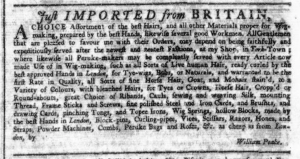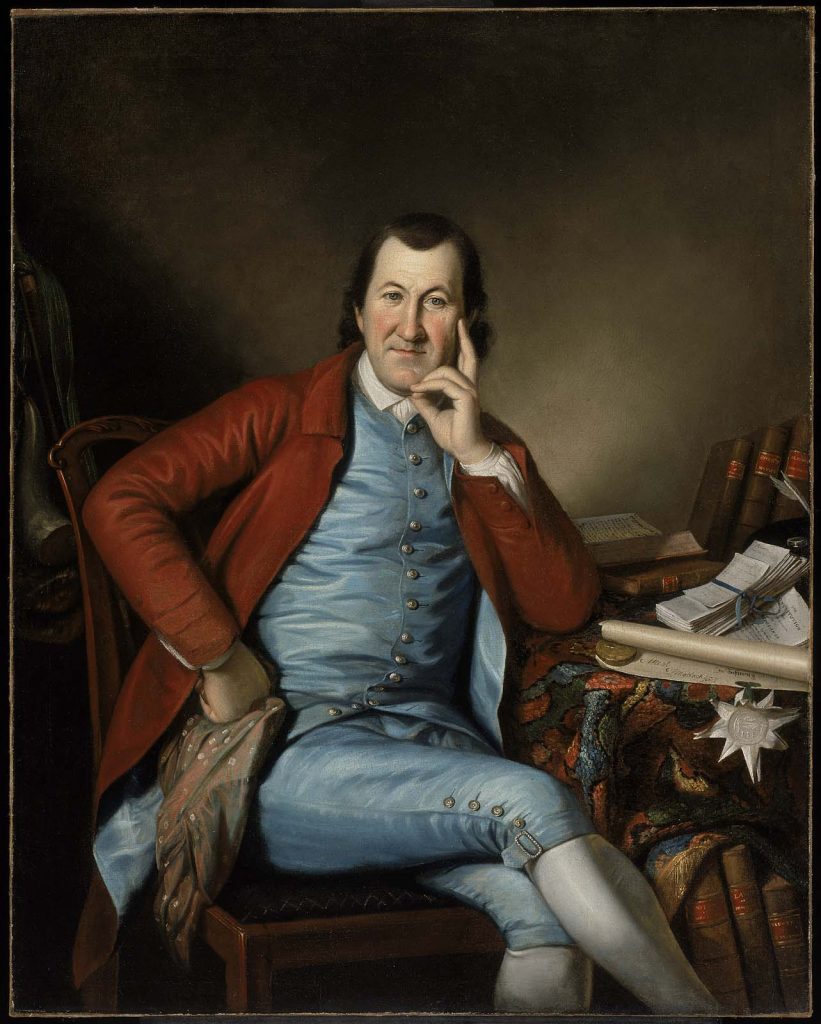Last Friday I had the opportunity to attend “Ballads from Boston: Music from the Isaiah Thomas Broadside Ballads Collection,” an interactive performance and lecture by David and Ginger Hildebrand from the Colonial Music Institute. I was especially interested in this concert (part of the American Antiquarian Society’s slate of Spring 2016 Public Programs, free and open to the public) because I have worked with digital humanities curator Molly O’Hagan Hardy on other aspects of the Isaiah Thomas Broadside Ballads Project. In particular, my students from Assumption College have participated in transcribing about two dozen of the ballads to make them keyword searchable and thus more accessible to both scholars and general audiences. This collaborative community service learning project began last fall in my Revolutionary America course and continued this spring in my Public History course and an independent study for a student completing a capstone research project for the Peace and Conflict Studies minor.
My students and I take some pride in helping to make the Isaiah Thomas Broadside Ballads Project more accessible to multiple audiences, but the work we have done differs significantly from the way in which David and Ginger Hildebrand have made these early-nineteenth-century ballads accessible. In addition to their performance last Friday, they have recorded approximately thirty of the ballads, which are now available on the Broadside Ballads website. In my view, this transforms the entire project. As a scholar, I have approached the ballads from a print culture perspective, but the Hildebrands underscore that these broadsides were not just material texts. Those words on the page were meant to be sung aloud and heard by early Americans. They had melodies that would have been readily recognized, even if the words were not familiar. They were part of the soundscape of Boston and other cities and villages in the early nineteenth century. I’ve noticed in recent years that historians and scholars in related disciplines have increasingly consulted graphic arts materials in efforts to better recover and represent what America looked like in eras before photography. Except for musicologists, we have not (yet) given the same attention to what early America sounded like at various times before recording technology. The work undertaken by the Hildebrands helps to remedy that.

As for the concert, the Hildebrands selected seventeen ballads to perform, though they did not move directly from one to the next. Instead, they offered remarks, context, and explanations for each of their selections before performing each on period instruments (including a harpsichord, a hammered dulcimer, and a violin), while dressed in period clothing. (This was a feast for the eyes as well as for the ears.) They provided background about historical events mentioned in the lyrics and traced the origins of many of the melodies. Many of the ballads had twenty or more verses, so they judiciously selected the most important for telling a story or giving the audience a taste.
Many of the melodies continue to be popular (or at least recognizable) today, but most dated back earlier than the nineteenth century. The Hildebrands explained that the best way for a new song to become popular was to set it to a familiar tune that most people already knew. In that way, melodies had lives of their own that extended across years, decades, and even centuries. Sometimes they were updated or adapted, but they were transmitted largely intact across generations. Performers added their own touches, but these usually amounted to variations on standardized melodies. The Hildebrands described this as honoring melodies again and again because everybody knew them (and certainly not plagiarizing them in the way we might assume for similar practices today). This reminded me of the common practice among printers of reprinting material directly from other newspapers in their own publications. Our concept of “stealing” the intellectual and creative labor of others has shifted in the two centuries since the Isaiah Thomas Broadside Ballads were printed. (This does leave me with several questions about copyright in the early nineteenth century.)
While the melodies had variations, so did the lyrics. I was not the only scholar who had my laptop open so I could follow along with the original ballads via the Broadside Ballads website as the Hildebrands performed them. I noticed that they sometimes made minor changes to the lyrics. Although the Hildrebrands did not indicate this was the case, I imagine that the men and women who sang these ballads in the early nineteenth century would have done the same. The lyrics offered a general outline for any particular song, but the preferences and creativity of performers further shaped them. I imagine that regional differences may have emerged as well, much like modern summer campers have very similar repertories for singing in dining halls and around campfires. The words and melodies are largely the same, but small differences create distinct performances from camp to camp. I found this helpful when thinking about the aural aspects of the ballads. From a print culture perspective I am very conscious to quote each ballad exactly as it appeared on the page (and require students to do so when transcribing them, down to misspellings and missing letters), but the lyrics, like the melodies, were likely altered to suit the tastes of the performers in the nineteenth century, just as the Hildebrands play with the lyrics today.
Given that this project was created to explore advertising, marketing, and consumer culture in early America, I must include the final stanza of “The Times.”
So here’s a true song for them that will buy,
And I’ll leave it to yourselves if I’ve told you a lie,
The like of my song you have not heard many,
The price is but small, you may have one for a penny.
The Hildebrands explained that even though Isaiah Thomas made arrangements with Boston printer Nathaniel Coverly to purchase all of the ballads that came off the press in his shop, most ballads were either sold by booksellers or peddled in the streets. These “verses in vogue with the vulgar,” as Thomas described them, were the popular culture of the day. Peddlers called attention to their wares by singing the ballads, not just announcing that they had them for sale. In fact, some melodies familiar today are vestiges of songs street peddlers sang in London three centuries ago. In the final verse of “The Times” the man or woman hawking the ballads on the street did what is today called “breaking the fourth wall” by departing from the story being told in order to engage and interact with the audience. Passersby had benefited from a few moments of free entertainment. What better way to show their appreciation – and continue to derive pleasure from the ballad – than by purchasing one of their own for just a penny?
From the very first ballad, “The Frog and Mouse,” I found myself tapping my foot. For others, especially “How the Glass Stands” (which, according to legend, Alexander Hamilton sang the night before his fateful duel), the Hildebrands’ performance revealed ballads much more haunting than the text suggests on its own when read silently. I plan to continue working on the Isaiah Thomas Broadside Ballads Project with my students, but I will approach the project in new ways as a result of the Hildebrands’ performance and recordings. (Indeed, the recordings will be an important teaching tool in their own right.) I’ve gained a new appreciation for the way Bostonians and others would have experienced them in the early nineteenth century.










